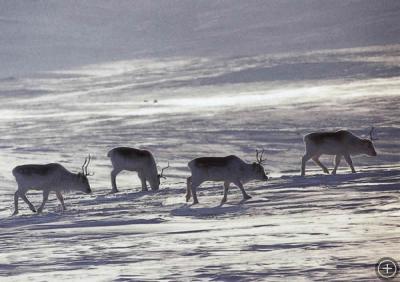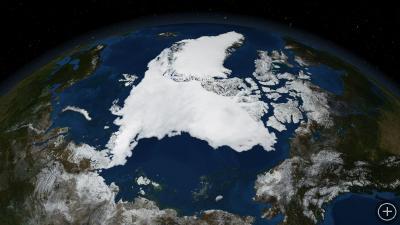About the Arctic
At the northern tip of the globe, the Arctic is essentially an ocean—the Arctic Ocean—ringed by land. Sometimes called “the land of the midnight sun,” it includes parts of Canada, Greenland, Russia, the United States (Alaska), Iceland, Norway, Sweden, and Finland. During summer in the Northern Hemisphere, the high-latitude Arctic region tilts directly toward the sun. At the Arctic Circle, there is one day—the summer solstice—when the sun doesn’t set. As you move north, the continuous daylight lasts longer and longer. At the North Pole, the sun shines day and night for six months.
Where exactly is the Arctic region? It depends who you ask. The Arctic is often defined as everything north of the Arctic Circle (66°, 32´ north latitude), but that’s not a rigid rule. There are other boundaries that better suit political or scientific interests. For example, the U.S. Congress recognizes all of the Bering Sea (which goes south to about 53° North latitude) as part of the Arctic for planning and budgeting reasons.
Arctic lands are mostly tundra, treeless expanses where only moss, lichen, and shrubs grow. These hardy organisms live in the thin layer of topsoil that overlies the permafrost, soil that remains frozen solid year round.

Prey for both animal predators and subsistence hunters alike, caribou play an important role in the Arctic ecology.
Far from lifeless, the Arctic tundra is home to polar bears, wolves, muskox, reindeer, caribou, whales, lemmings, and over a hundred species of birds—but not penguins, which live only in the Southern Hemisphere. And, unlike Antarctica, people have lived in the Arctic for thousands of years.
Much of the Arctic Ocean—including the North Pole—is covered by sea ice. But sea ice has been shrinking rapidly in recent years due to global warming. Experts predict that summer sea ice may disappear entirely by about 2040, or possibly much sooner, posing a serious threat to polar bears and other creatures that depend on ice.
Some foresee a silver lining to the thawing of the Arctic. For example, receding sea ice might open up the Northwest Passage shipping lane, turning the Arctic into a convenient trade route. Melting sea ice might also make offshore drilling possible in the Artic, a prospect that has various countries claiming and debating rights to undersea Arctic oil fields.









